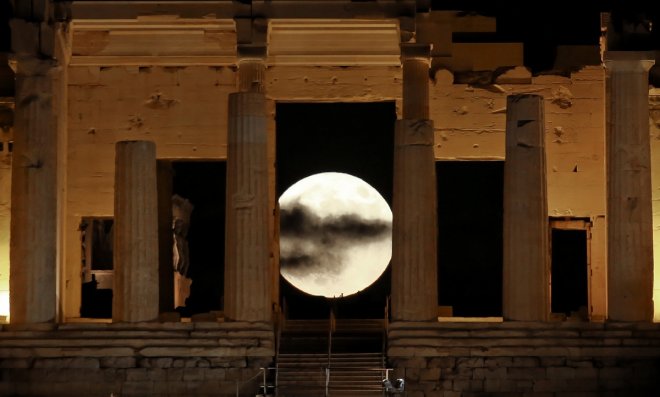
Supermoon of 2017: On the night of December 3, the sky-watchers across the globe will witness the first and last observable supermoon of 2017. The last celestial supermoon was glimpsed in November 2016. NASA had said that November 14, 2016 moon was the closest to since 1948 and it will not come that close again until 2034. The next supermoon will take place on Tuesday, January 2, 2018.
What is a Supermoon?
A supermoon is popularly known as a full or new moon that coincides with the lunar orbit making an especially close approach to Earth. The scientific term of supermoon is perigee syzygy. Gurtina Besla, a professor at the Arizona University, said that the phrase 'perigee syzygy' refers to the moon being at its closest distance to the Earth, and syzygy refers to the alignment of multiple bodies — the moon, Earth and sun need to be aligned for us to see a full moon.
November Supermoon: Check out these breathtaking pictures of the rare celestial event
"Perigee refers to the moon being at its closest distance to the Earth, and syzygy refers to the alignment of multiple bodies — the moon, Earth and sun need to be aligned for us to see a full moon. So it translates to the closest separation between the moon and Earth when the Earth, moon and sun are aligned," Besla told NPR.
Although, this will be the fourth supermoon of this year, but this is the only one that we will be able to see with naked eyes. This happened because the other three supermoons of 2017 coincided with new moons, when the lunar disk shows a totally darkened face.
Experts reveal that the supermoon, which will be 16 percent brighter and 7 percent larger than normal, can be observed at 3:45 AM ET on December 4. According to NASA, the moon will be at its nearest distance to Earth – a measly 222,443 miles during this time. When an average apogee occurs, the moon is furthest from the earth at a distance stretching to roughly 252,000 miles.
Interested people can also watch the live stream of the celestial event at the Virtual Telescope as it has announced that it will broadcast it.
"Don't make the mistake of photographing the moon by itself with no reference to anything. I've certainly done it myself, but everyone will get that shot. Instead, think of how to make the image creative—that means tying it into some land-based object. It can be a local landmark or anything to give your photo a sense of place," NASA staff photographer Bill Ingalls said.
How to get the best view of Supermoon?
If you're staying in an urban area, then you might not get a proper view. But, if you manage to go to an area with wide, open sky without a lot of light pollution, you'll have a clearer view of the supermoon. (If you don't know of any dark areas near your home, check the Dark Site Finder for recommendations.)









